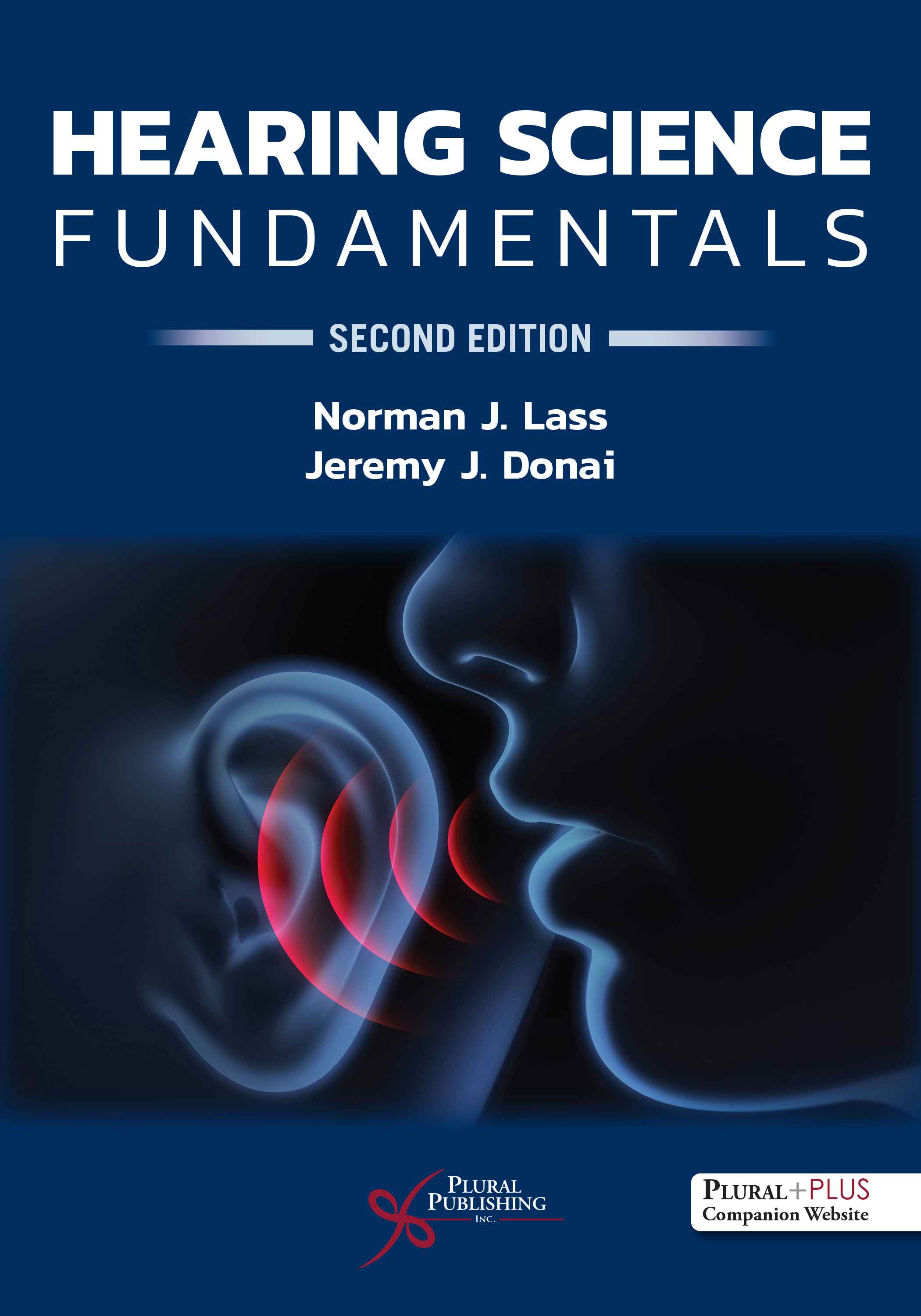
Hearing Science Fundamentals.
Second Edition
Norman J. Lass, Jeremy J. Donai
Details: 370 pages, 2-Color, Softcover, 7" x 10"
ISBN13: 978-1-63550-328-9
© 2023 | Available
For Instructors
Purchase
A New Edition is Coming in July!
Hearing Science Fundamentals, Second Edition maintains the straightforward style of the previous edition, introducing the basic concepts in hearing science in an easy-to-understand format. With a wide variety of student-friendly features and instructor resources, this comprehensive textbook facilitates the absorption of technical material by both undergraduate and graduate students. The text is divided into four clear sections to cover everything from the physics of sound to the anatomy and physiology of the auditory pathway and beyond. The textbook begins by delving into the basics of acoustics and digital signal processing (DSP). In the next section, readers will find full coverage of the basic anatomy and physiology of the auditory mechanism. The third section contains eight chapters on psychoacoustics and how sound is perceived via the auditory pathways. The book wraps up with a brand-new section devoted to pathologies of the auditory mechanisms.
New to the Second Edition
- New coauthor, Jeremy J. Donai, AuD, PhD, brings his extensive clinical and research experience to the concepts discussed
- Nine new chapters, including:
- Review of Speech Acoustics (Chapter 2)
- Digital Signal Processing (Chapter 3)
- Binaural Processing (Chapter 8)
- Temporal Processing (Chapter 10)
- Signal Detection Theory (Chapter 13)
- Auditory Perception and Hearing Impairment (Chapter 14)
- Separate and expanded chapters for Pathologies of the Auditory Mechanism (Chapter 9) from first edition.
- Pathologies of the Conductive Auditory Mechanism (Chapter 15)
- Pathologies of the Sensory Auditory Mechanism (Chapter 16)
- Pathologies of the Central Auditory Mechanism (Chapter 17)
- Clinical Notes and Vocabulary Checks features have been added through the text
- Evidence-based information incorporated throughout the text
- Updated Recommended Readings list
- Ancillary materials accessible on a PluralPlus companion website: a sample syllabus, test bank, and PowerPoint lecture slides for instructors, as well as practice quizzes, anatomy-labelling exercises, audio examples, and overview lecture videos for students
Key Features
- Learning Objectives and Key Terms at the beginning of each chapter prepare the student for the chapter contents
- Two-color anatomical and line illustrations aid understanding of important technical concepts
- Q & A boxes reinforce important information presented in the text
- A Glossary of important terms
Instructor test bank available on the Respondus Test Bank Network.
Reviews
"I found this textbook to be one of the most helpful compared to past textbooks. It was easy to follow and all of the concepts were thoughtfully and fully explained in a way beginners could understand. Because I am a more visual learner, I also found the added pictures and diagrams to be extremely helpful for me. Overall, this is one of my favorite textbooks I've used."
—Anna Claire Smith, Student in Doctor of Audiology Program, Texas Tech University Health Sciences Center
"I think it is much easier to read than the original hearing science textbook we used in undergrad. I like how the key terms/concepts are in blue and are that way consistently throughout the text. Also, I like the vocabulary checkpoints because it brings you back to those important concepts without having to flip back pages trying to find it. The visuals are really good and help a lot with each topic throughout the book. As someone who is a more visual learner, that is really important to me. I get bored reading through a lot of black and white pages so it’s nice to not only have the blue coloring but also the images/figures frequently throughout."
—Michaela Machak, Towson University student
"I think the biggest strength of this book is the level at which it is written. So many hearing science books are far too deep and difficult for an undergraduate level course. The material is kept at an introductory level while explaining concepts in easy to understand language. The presentation of the material sets students up for success when applying hearing science to clinical aspects in future studies. Breaking the anatomy/physiology down into sections related to conductive, sensory, and central mechanisms really helps when later explaining conductive and sensorineural hearing loss. ...I was very happy with the Clinic Notes in each section. So often, students have difficulty understanding the need to learn about hearing science and the Clinic Notes allow the students to see the material will be relevant in their future studies in Audiology and/or Speech-Language Pathology."
—Kim E. Sesing, AuD, CCC-A, Assistant Professor, Department of Speech-Language Pathology, Concordia University Wisconsin
"Overall, a great textbook and includes a lot of information that is necessary for an undergraduate student to get an idea of the profession of audiology. The learning objectives give a great summary of each chapter and are a good tool for creating study guides. The clinical notes and question and answer sections in each chapter are fantastic. The CANS chapter is well organized and goes into great depth, with excellent figures. This chapter was well done and better than I have seen in other textbooks. There is humor incorporated in the book, throughout which helps the reader connect with the authors and facilitates learning."
—Tiffany Shelton, AuD, CCC-A, Clinical Assistant Professor, Sorensen Center for Clinical Excellence, Utah State University
"The visuals and the vocabulary checks are major strengths of the text. Overall, the text is quite effective at presenting all necessary requirements for a Hearing Science course."
—Donna Pitts, AuD, CCC-A, Associate Professor, Department of Speech-Language-Hearing Sciences, Loyola University Maryland
“The second edition of Hearing Science Fundamentals is a simply and clearly written introductory text, ideal for students beginning their training. It covers topics ranging from anatomy and physiology to auditory perception. This edition includes nine new chapters in addition to an expended section on auditory system pathologies. Each chapter provides an overview of key theoretical concepts with useful ‘vocabulary checkpoints’ to help familiarize the reader with technical terminology. ...Clinical audiology students are likely to find the ‘clinical notes’ boxes throughout the text helpful in considering how their theoretical knowledge can apply in a clinical context…The book provides a good starting point for building an understanding of the basic concepts underlying the study of hearing science…
The online supplementary materials are extensive including quizzes and lecture videos as well as anatomy exercises. These online resources are well worth utilizing, particularly for students preparing for assessments. There are also elements that may be useful for teaching professionals looking to create or refresh their own lecture materials, with example lecture slides and a test bank….the book is a useful addition to any academic audiology library.”
—Saima Rajasingam, Lecturer in Audiology, Department of Vision and Hearing Sciences, Faculty of Science and Engineering, Cambridge, UK in ENT & Audiology News (September/October 2022)
Preface
Acknowledgements
Contributors
Reviewers
Section I. Acoustics
Chapter 1. Basic Acoustics
Key Terms
Learning Objectives
Sound
Sinusoidal Motion
Spatial Concepts
Amplitude
Wavelength (λ)
Temporal Concepts
Cycle
Period
Frequency
Phase
Velocity
Frequency/Period Relationship
Frequency/Wavelength Relationship
Sound Propagation and Interference
Complex Sounds
Periodicity Versus Aperiodicity
Resonance
Cavity (Acoustical) Resonance
Frequency Response Curve
Ear Canal Analogy
The Decibel
Computational Perspective
Hearing Threshold Level and Audiometric Zero (0 dB HL)
Summary
Recommended Readings
References
Chapter 2. Review of Speech Acoustics
Helen A. Boyd-Pratt and Jeremy J. Donai
Key Terms
Learning Objectives
Source-Filter Theory and Vocal Tract Anatomy
Acoustic Measures
Fundamental Frequency
Voice Onset Time
Root Mean Square Amplitude
Formants (Spectral Resonances)
Long-Term Average Spectrum (LTAS)
Speech Sound Classification
Consonant Classification
Vowel Classification
Speech Intelligibility Index (SII) and Count-the-Dots Audiogram
SII
Count-the-Dots Audiogram
Ling 6 Sounds Test
Summary
Recommended Readings
References
Chapter 3. Digital Signal Processing
Key Terms
Learning Objectives
Amplitude Quantization and Sampling Frequency
Aliasing and Anti-Aliasing Filtering
Windowing
Frequency Versus Time Tradeoff (Frequency Resolution Versus Temporal Resolution)
Pre-Emphasis
Digital Hearing Aid Signal Processing
Compression
Directional Microphones and Digital Noise Reduction
Summary
Recommended Readings
References
Section II. Structure and Function
Chapter 4. Anatomy and Physiology of the Conductive Auditory Mechanism
Key Terms
Learning Objectives
Outer Ear
Auricle (Pinna)
External Auditory Meatus (Outer Ear Canal)
Tympanic Membrane (Eardrum)
Middle Ear
Tympanic Cavity Proper (Tympanum)
Malleus
Incus
Stapes
Middle Ear Muscles
Function of the Conductive Mechanism
Non-Acoustic Function
Acoustic Function
Impedance
Impedance Mismatch
Auditory (Eustachian) Tube
Action of the Middle Ear Muscles
Summary
Recommended Readings
References
Chapter 5. Anatomy and Physiology of the Sensory Auditory Mechanism
Key Terms
Learning Objectives
Inner Ear
Function of the Sensory Mechanism
Mechanical Properties
Active Processes
Cochlear Electrophysiology
Resting Potential
Potentials Seen as Response to Stimulation
Single-Cell Electrical Activity
Phase Locking
Summary
Recommended Readings
References
Chapter 6. Anatomy and Physiology of the Central Auditory Mechanism
Key Terms
Learning Objectives
Afferent Central Auditory Pathway
Interhemispheric Connections
Efferent Central Auditory Pathway
Summary
Recommended Readings
References
Section III. Psychoacoustics
Chapter 7. Normal Hearing
Key Terms
Learning Objectives
Stimulus Characteristics
Stimulus Frequency
Stimulus Duration
Stimulus Intensity
Methods of Stimulus Presentation
Earphones
Speakers
Assessment of Auditory Sensitivity
Method of Limits
Method of Adjustment
Method of Constant Stimuli
Listener (Subject) Variables
Age Variation
What Is “Normal Hearing”?
Localization of Sound
Interaural Intensity (Level) Cues for Localization
Interaural Aural Time (Phase) Cues for Localization
Hearing by Bone Conduction
Summary
Recommended Readings
References
Chapter 8. Binaural Processing
Katharine Fitzharris
Key Terms
Learning Objectives
Advantages of Binaural Hearing
Listening in Noise
Binaural Squelch
Directional Hearing
Localization
Lateralization
Vertical Localization
Minimal Audible Angle (MAA)
Minimal Audible Movement Angle (MAMA)
Distance Perception
Precedence Effect
Disadvantages of Binaural Hearing
Physiology of Binaural Hearing
Afferent Pathways
Efferent Pathways
Summary
Recommended Readings
References
Chapter 9. Masking
Key Terms
Learning Objectives
Masker-Signal Relationship and Sound Level
Masking of Tones by Other Tones
Masking of Tones by Narrow Noise Bands
The Critical Band
Masking of Tones by Wide Noise Bands
Special Cases of Masking
Energetic and Informational Masking
Masking in Clinical Audiology
Summary
Recommended Readings
References
Chapter 10. Temporal Processing
Key Terms
Learning Objectives
Neural Physiology
Temporal Fine Structure and Temporal Envelope
Dip Listening
Modulation Rate and Modulation Depth
Temporal Processing Skills
Temporal Integration
Temporal Resolution
Temporal Patterning
Temporal Masking
Summary
Recommended Readings
References
Chapter 11. Loudness and Pitch
Key Terms
Learning Objectives
Loudness
Pitch
Residue Pitch and the Missing Fundamental
Summary
Recommended Readings
References
Chapter 12. Differential Sensitivity
Key Terms
Learning Objectives
The Fechner-Weber Fraction
Difference Limen for Intensity
Difference Limen for Frequency
Discrimination
Summary
Recommended Readings
References
Chapter 13. Signal Detection Theory
Key Terms
Learning Objectives
Response Distributions
Response Types
Sensitivity and Specificity
Response Bias
Discriminability Index (d′) and ROC Curves
Ceiling and Floor Effects
Summary
Recommended Readings
References
Chapter 14. Auditory Perception and Hearing Impairment
Key Terms
Learning Objectives
Outer Hair Cell (OHC) Damage
Auditory Recruitment
Inner Hair Cell (IHC) Damage
Cochlear Dead Regions
Auditory Nerve Damage
Effects on Frequency Selectivity
Auditory Excitation Patterns
Effects on Temporal Processing
Summary
Recommended Readings
References
Section IV. Pathologies of the Auditory Mechanisms
Chapter 15. Pathologies of the Conductive Auditory Mechanism
Key Terms
Learning Objectives
Pathologies of the Outer Ear
Auricle
Chondritis and Cauliflower Ear
External Auditory Canal
Impacted Cerumen
Pathologies of the Middle Ear
Eustachian Tube (Auditory Tube)
Otitis Media
Mastoiditis
Cholesteatoma
Pathologies of the Middle Ear Ossicles
Otosclerosis
Ossicular Discontinuity
Summary
Recommended Readings
References
Chapter 16. Pathologies of the Sensory Auditory Mechanism
Key Terms
Learning Objectives
Inner Ear Pathologies
Cochlea
Auditory and Non-Auditory Effects of Noise
Noise-Induced Hearing Loss
Socioacusis and Presbycusis
Meniere’s Disease
Sudden Sensorineural Hearing Loss
Ototoxicity
Auditory Nerve
Acoustic Neuroma (Vestibular Schwannoma)
Auditory Neuropathy Spectrum Disorder
Summary
Recommended Readings
References
Chapter 17. Pathologies of the Central Auditory Mechanism
Key Terms
Learning Objectives
(Central) Auditory Processing Definition
Signs and Symptoms
(C)APD Evaluation
Behavioral (Central) Auditory Skill Areas
Auditory Figure Ground
Low-Redundancy Speech
Dichotic Listening
Temporal Processing
Electrophysiological Assessment
Neural Response Overview
Management Strategies
Environmental Modifications
Compensatory Strategies
Auditory Training
Assistive Listening Technology
Pathologies of the Central Auditory Pathway
Traumatic Brain Injury
Cortical/Central Deafness
Cerebrovascular Accident
Multiple Sclerosis
Summary
Recommended Readings
References
Glossary
Index
Hearing Science Fundamentals, Second Edition with access to supplementary student and instructor materials on a PluralPlus companion website.
STUDENTS:
To access the student materials, you must register the access code printed on the inside front cover of your textbook on the companion website.
INSTRUCTORS:
To access the instructor materials, you must contact Plural Publishing, Inc. to be verified as an instructor and receive your access code.
Email: instructormaterials@pluralpublishing.com
Tel: 866-758-7251 (toll free) or 858-492-1555
*Note for students: If you have purchased this textbook used or have rented it, your access code will not work if it was already redeemed by the original buyer of the book. Plural Publishing does not offer replacement access codes for used or rented textbooks.
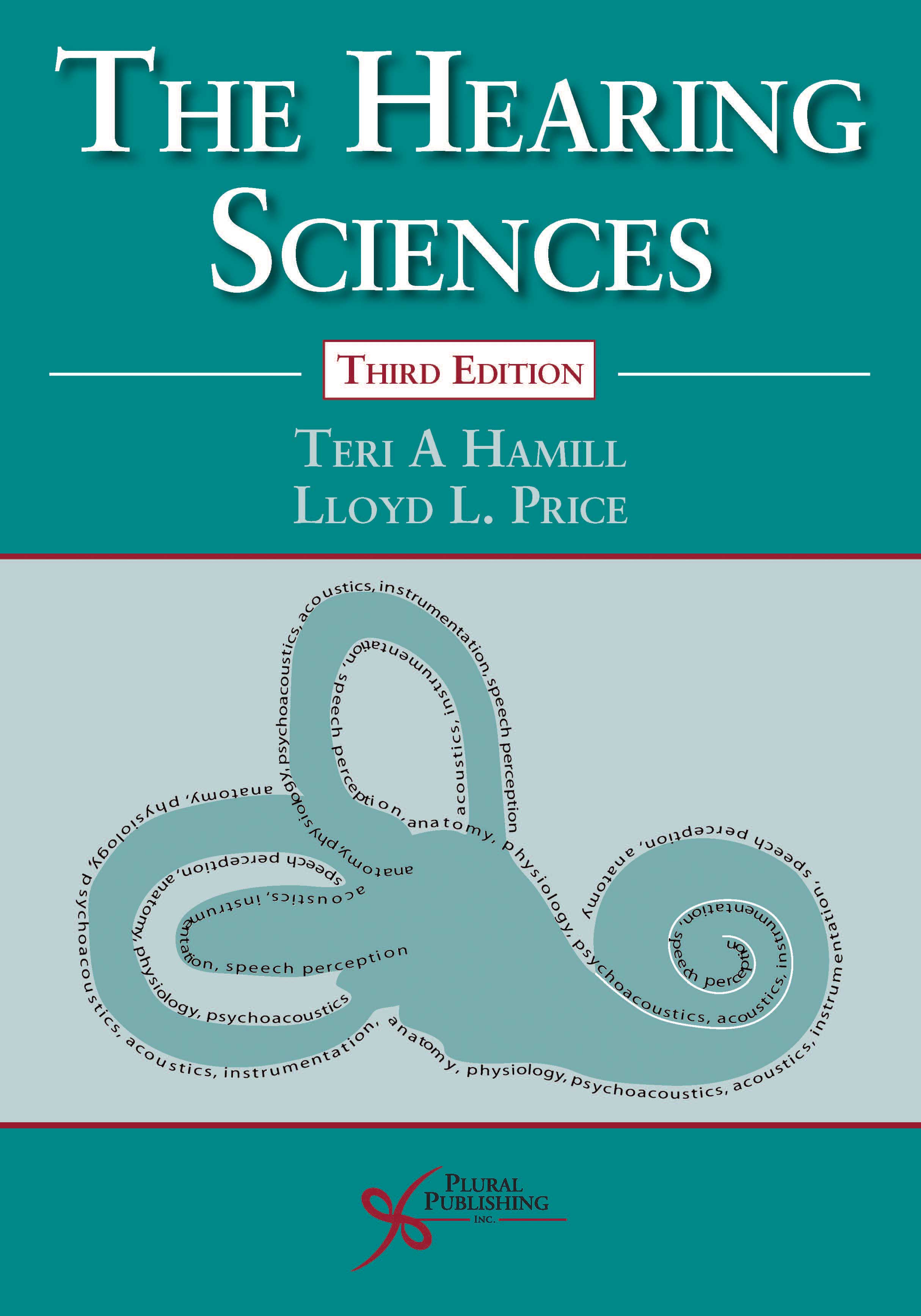
The Hearing Sciences
Third Edition
Teri A. Hamill, Lloyd L. Price
Details: 637 pages, B&W, Softcover, 8.5" x 11"
ISBN13: 978-1-94488-363-8
© 2019 | Available
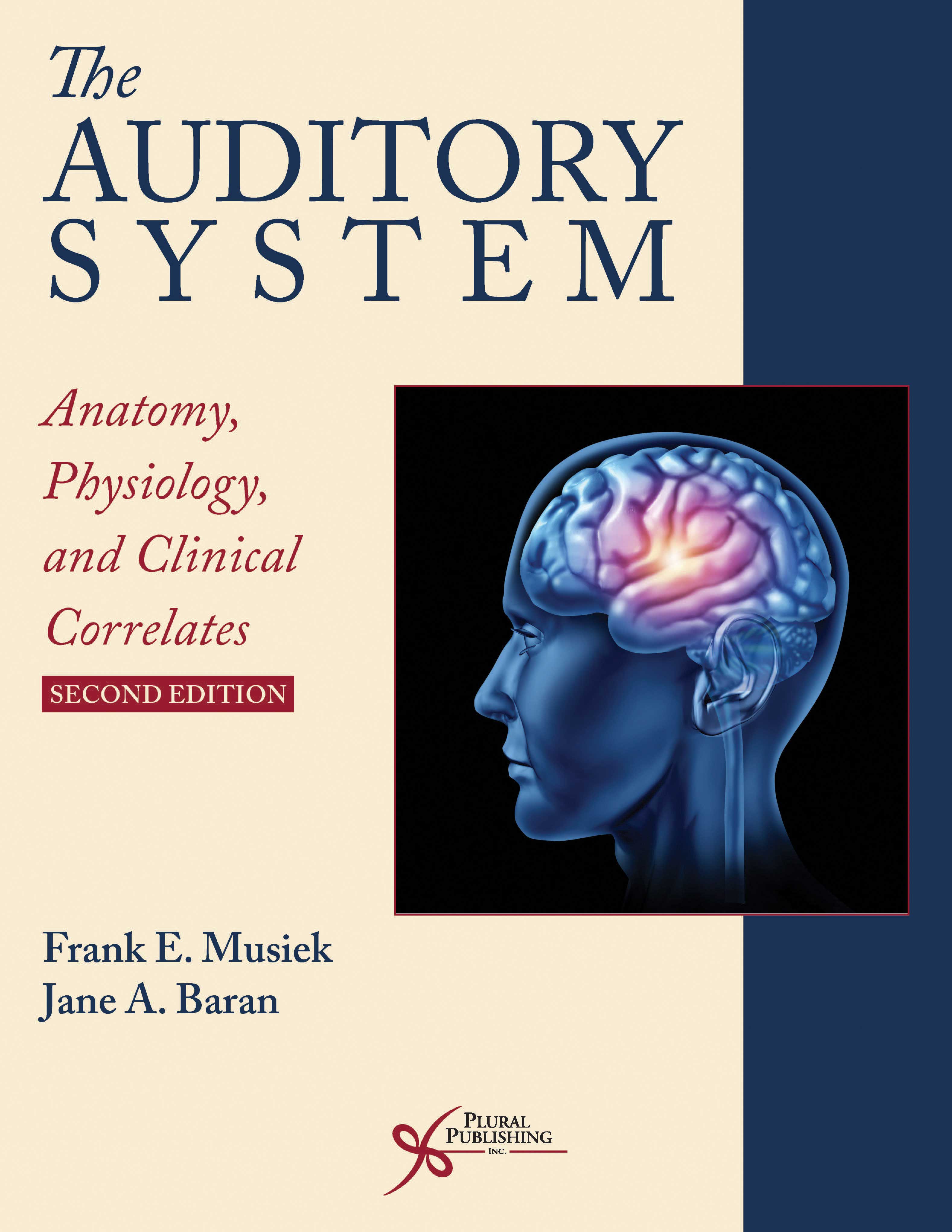
The Auditory System: Anatomy, Physiology, and Clinical Correlates
Second Edition
Frank E. Musiek, Jane A. Baran
Details: 487 pages, Full Color, Hardcover, 8.5" x 11"
ISBN13: 978-1-94488-300-3
© 2020 | Available
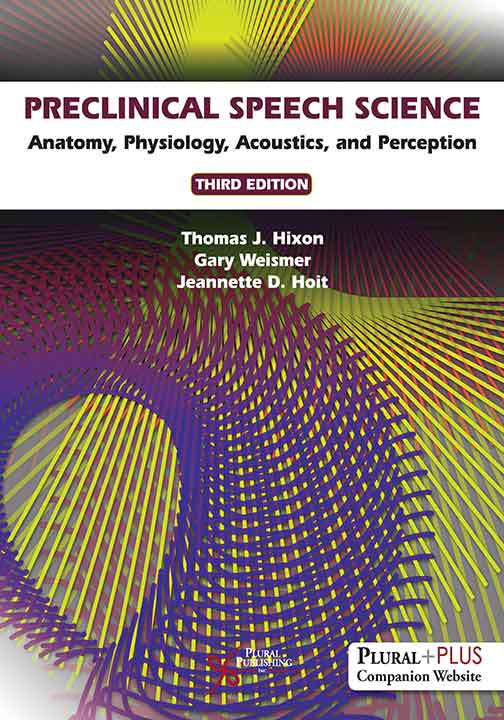
Preclinical Speech Science: Anatomy, Physiology, Acoustics, and Perception
Third Edition
Thomas J. Hixon, Gary Weismer, Jeannette D. Hoit
Details: 728 pages, Full Color, Hardcover, 8.5" x 11"
ISBN13: 978-1-63550-061-5
© 2020 | Available
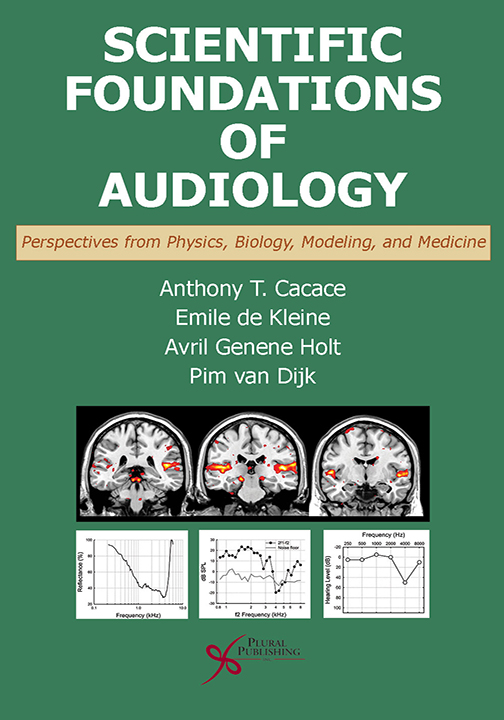
Scientific Foundations of Audiology: Perspectives from Physics, Biology, Modeling, and Medicine
380 pages, B&W, Hardcover, 7" x 10"
Anthony T. Cacace, Emile de Kleine, Avril Genene Holt, Pim van Dijk
Details: 380 pages, B&W, Hardcover, 7" x 10"
ISBN13: 978-1-59756-652-0
© 2016 | Available
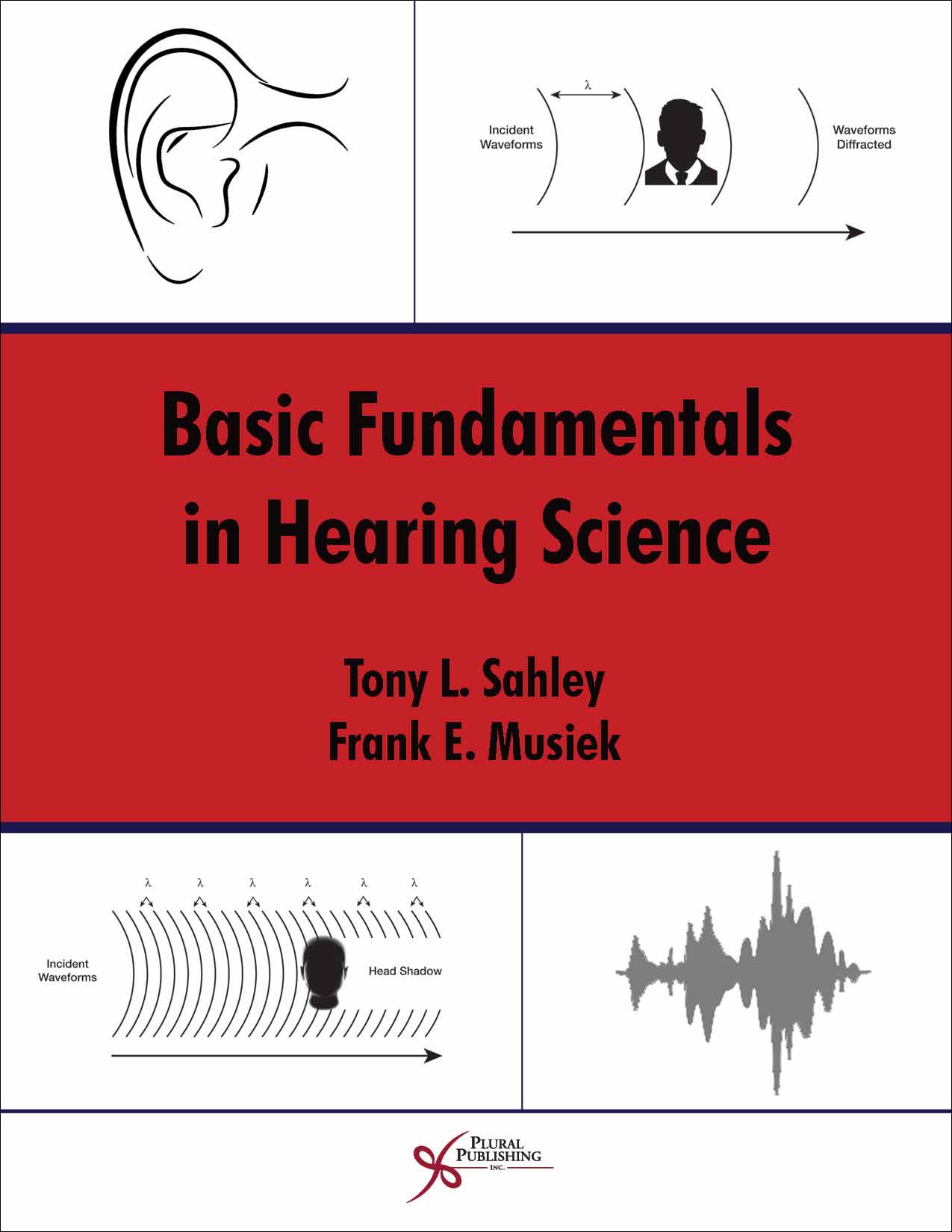
Basic Fundamentals in Hearing Science
First Edition
Tony L. Sahley, Frank E. Musiek
Details: 704 pages, B&W, Hardcover, 7" x 10"
ISBN13: 978-1-59756-549-3
© 2016 | Available
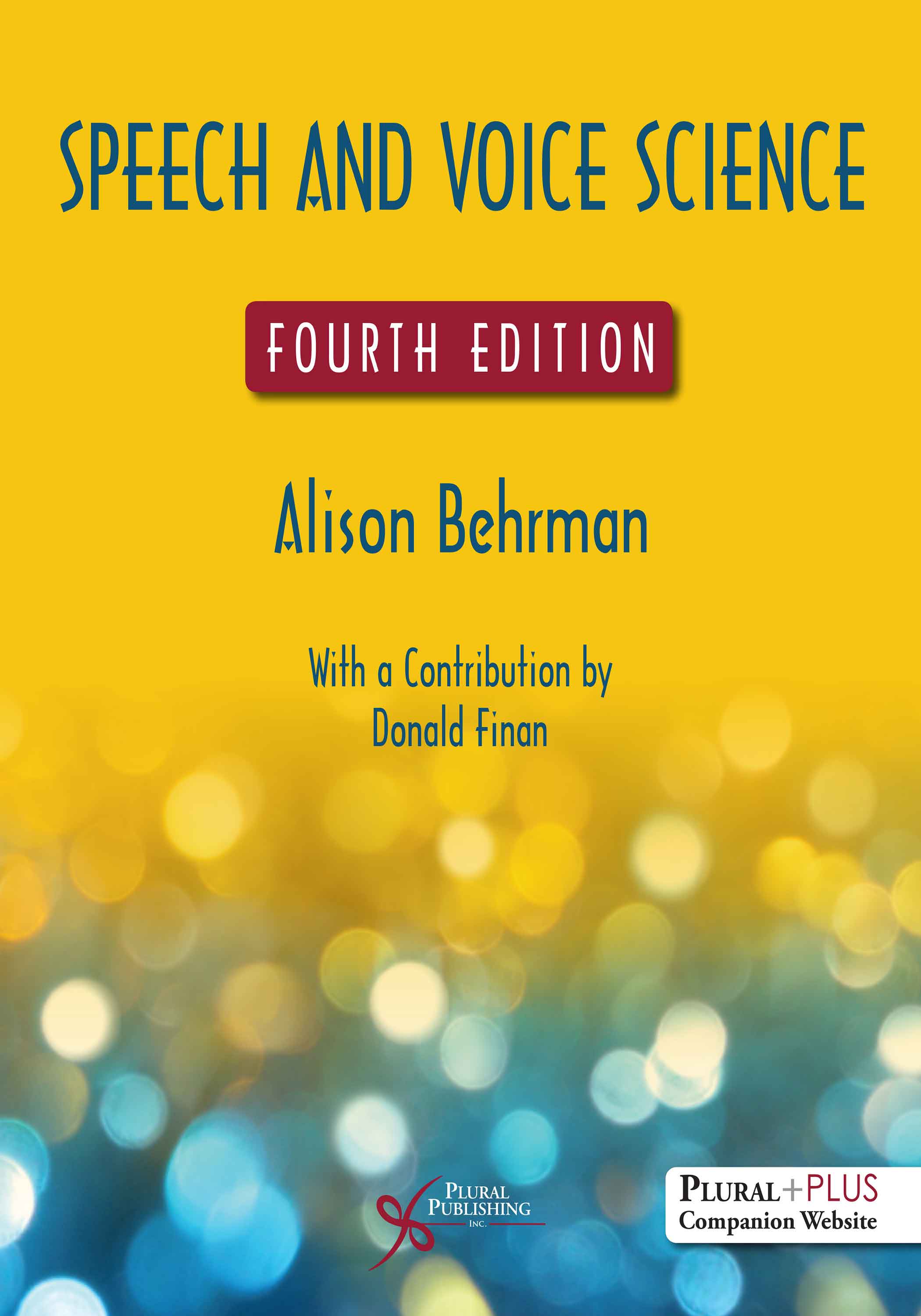
Speech and Voice Science
Fourth Edition
Alison Behrman
Details: 517 pages, 2-Color, Softcover, 8.5" x 11"
ISBN13: 978-1-63550-322-7
© 2023 | Available
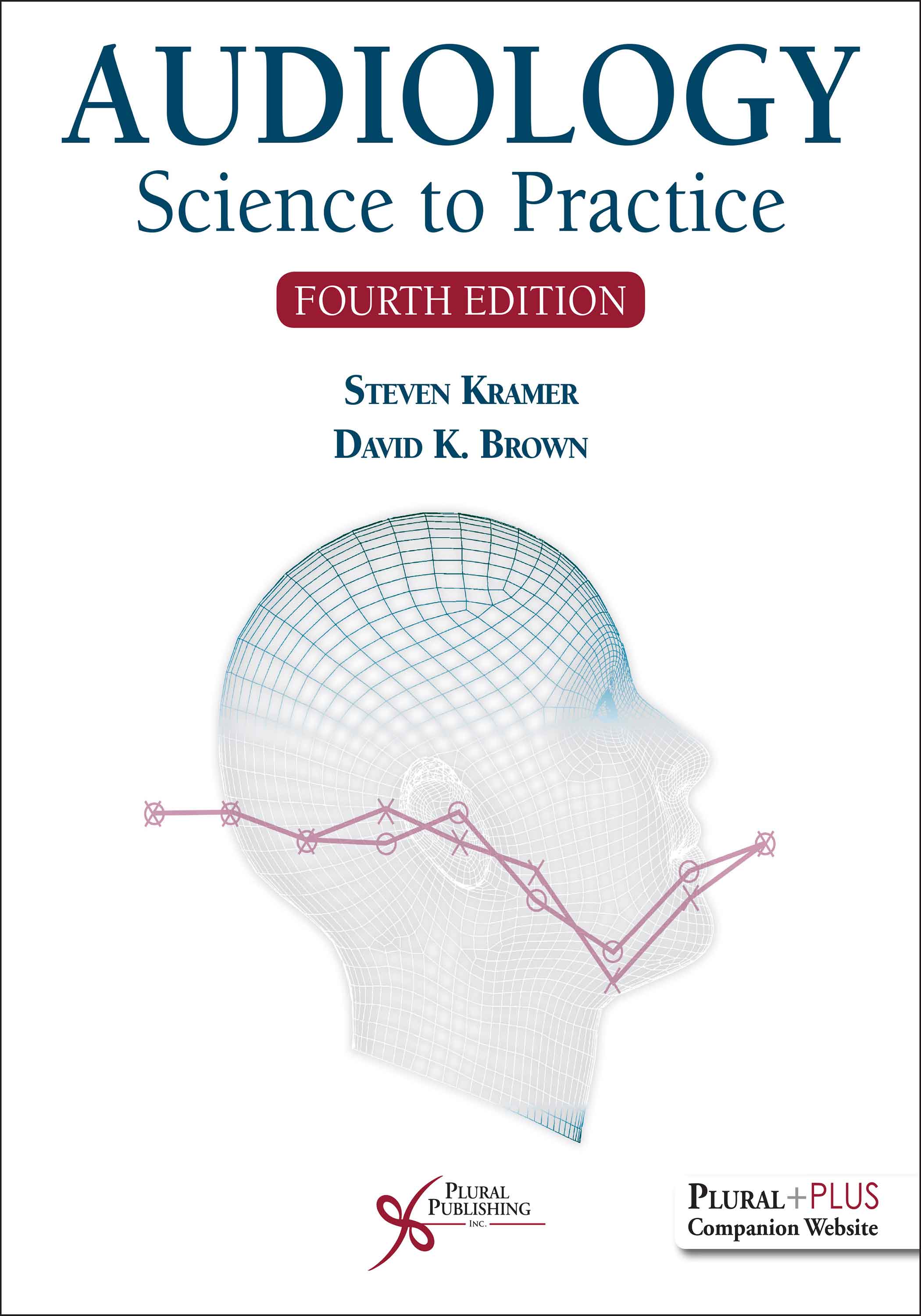
Audiology: Science to Practice
Fourth Edition
Steven Kramer, David K. Brown
Details: 487 pages, 2-Color, Softcover, 8.5" x 11"
ISBN13: 978-1-63550-346-3
© 2023 | Available
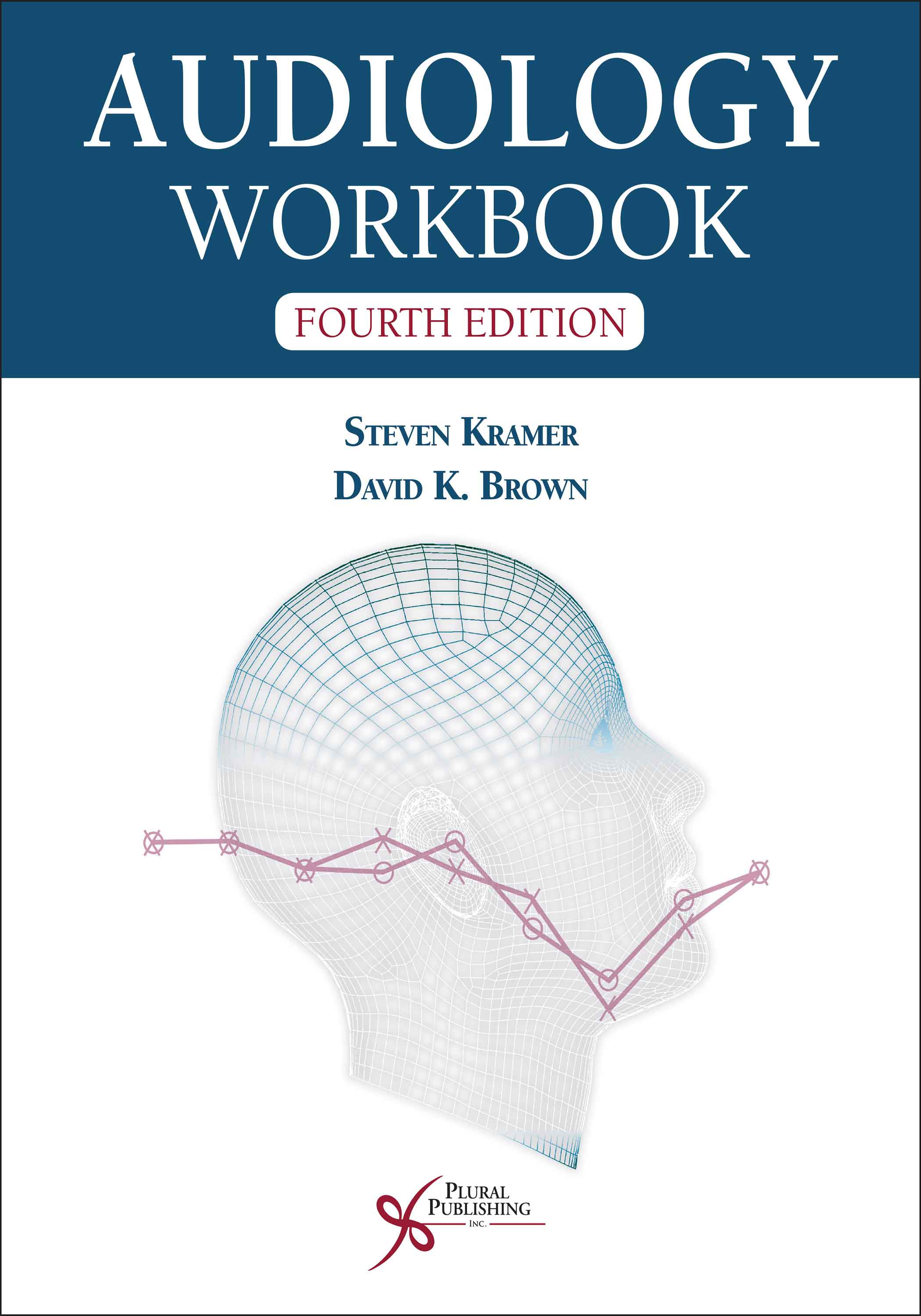
Audiology Workbook
Fourth Edition
Steven Kramer, David K. Brown
Details: 437 pages, B&W, Spiral Bound, 8.5" x 11"
ISBN13: 978-1-63550-348-7
© 2023 | Available
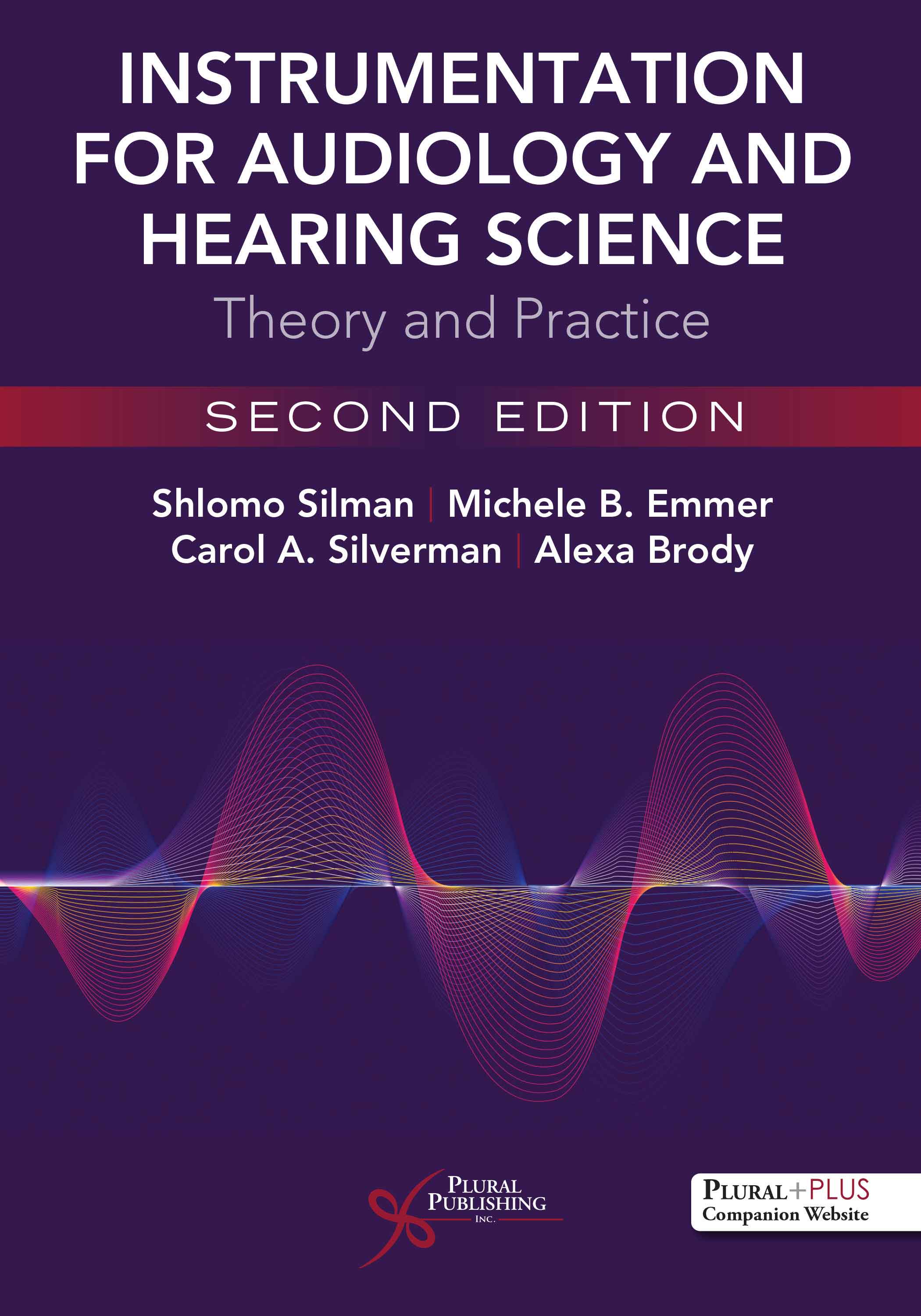
Instrumentation for Audiology and Hearing Science: Theory and Practice
Second Edition
Shlomo Silman, Michele B. Emmer, Carol A. Silverman, Alexa Brody
Details: 338 pages, B&W, Softcover, 7" x 10"
ISBN13: 978-1-63550-226-8
© 2023 | Available
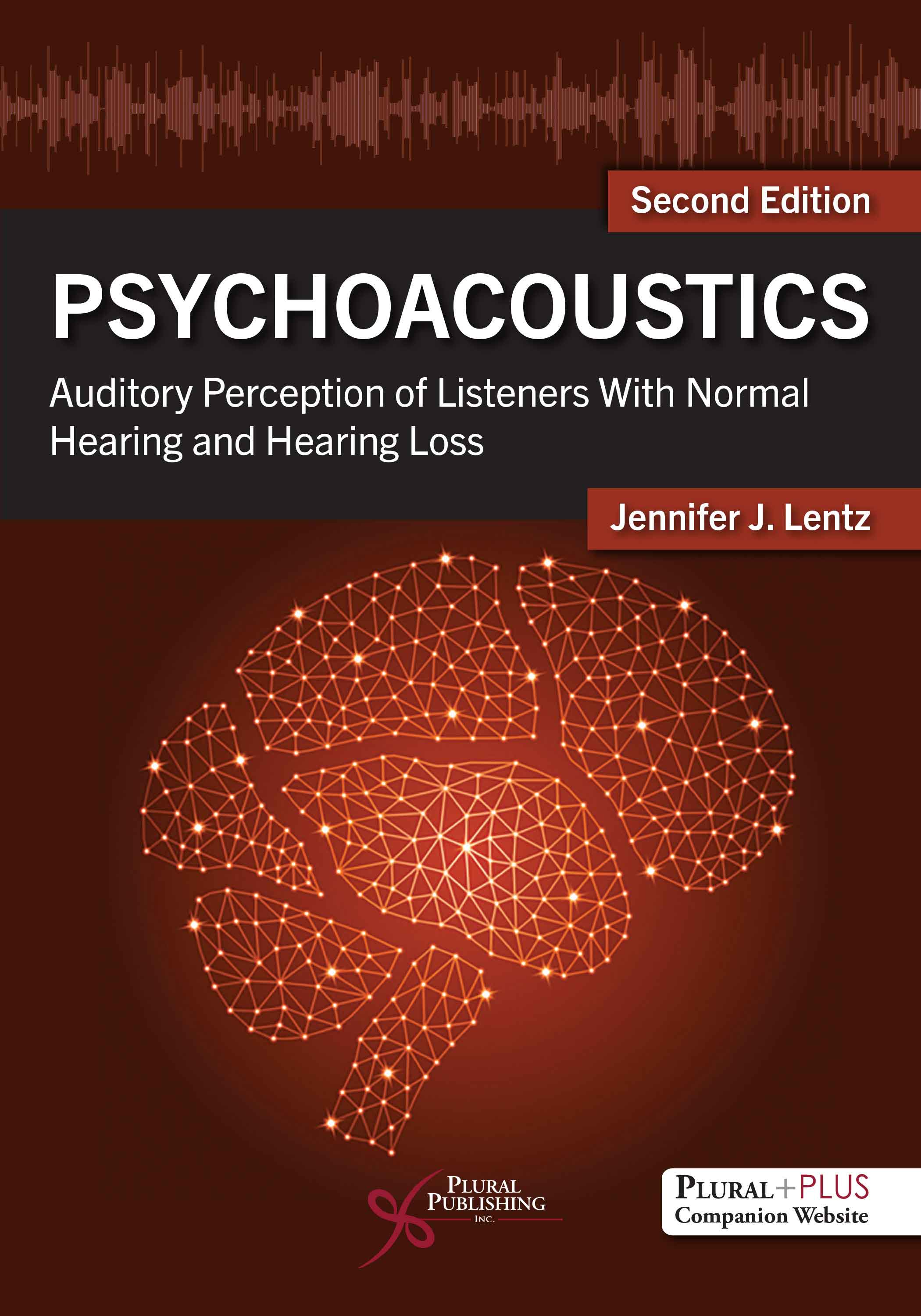
Psychoacoustics: Auditory Perception of Listeners with Normal Hearing and Hearing Loss
Second Edition
Jennifer J. Lentz
Details: 275 pages, B&W, Softcover, 7" x 10"
ISBN13: 978-1-63550-525-2
© 2025 | Available
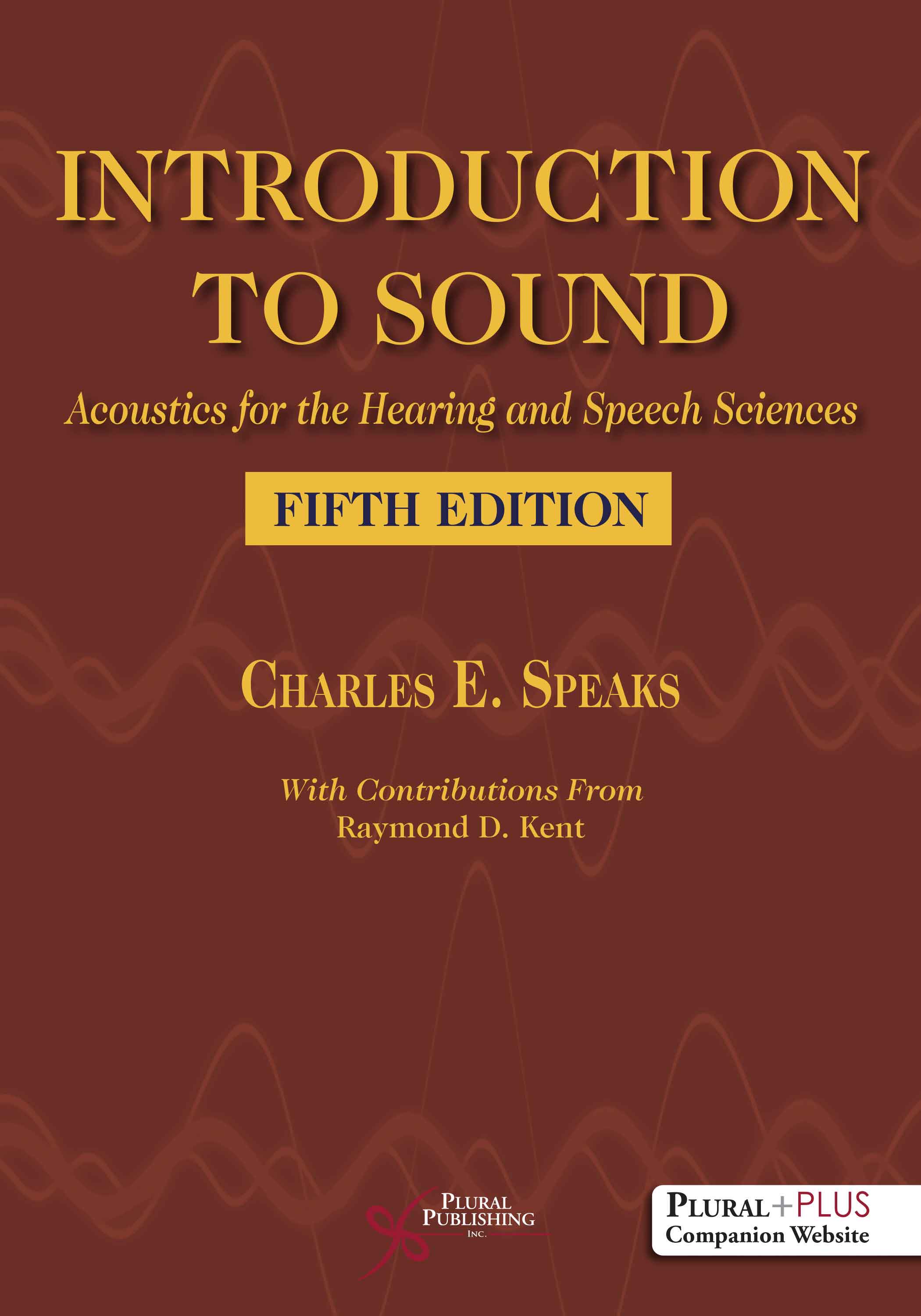
Introduction to Sound: Acoustics for the Hearing and Speech Sciences
Fifth Edition
Charles E. Speaks
Details: 460 pages, Two-Color, Hardcover, 7" x 10"
ISBN13: 978-1-63550-759-1
© 2026 | Available


